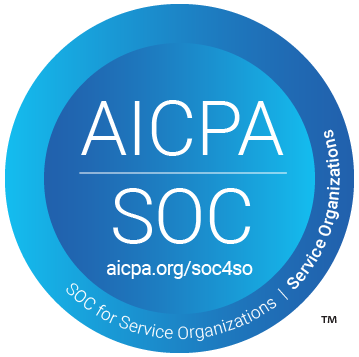Reskilling and Upskilling: A Strategic Response
To Changing Skill Demands

Many jobs and skills are evolving due to new technologies and digital advancements. As the demand for different skills grows, reskilling and upskilling are becoming essential strategies for organizations to stay competitive and help employees grow. By 2025, it’s estimated that around 85 million jobs could be replaced or altered due to changes in how humans and machines divide tasks. At the same time, these technological changes are expected to create 97 million new roles, meaning there will be many new opportunities for those with the right skills.
To keep up with these shifts, businesses and employees need to focus on reskilling and upskilling programs. Let’s break down what these terms mean and why they’re so important for the future of work.
What Are Reskilling and Upskilling?
Upskilling is about building on existing skills to help employees improve in their current roles. For example, if a marketing specialist learns advanced digital marketing techniques, that’s upskilling. It allows employees to become more skilled and valuable in their current positions, helping them stay relevant as their roles evolve.
Reskilling, on the other hand, involves learning completely new skills to transition into different roles within the organization. This is often necessary when someone’s current job is being phased out or significantly changed by new technologies. For example, if a factory worker learns how to operate a new machine or software system, that’s reskilling. Reskilling provides employees with the abilities they need to take on entirely different positions that align with the organization’s needs.
These approach emphasizes continuous education, enabling employees to progress within their current career trajectory. Employee development via gamification platforms is just one of many strategies companies are using to upskill their workforce. Investing in employees’ careers not only fosters loyalty but also boosts retention rates. According to LinkedIn Learning, 94% of workers would choose to stay longer with companies that actively invest in their career development. Both strategies help companies keep up with the rapid pace of change, filling critical skill gaps and ensuring employees are ready for future challenges.
Why Upskill and Reskill?
The demand for upskilling and reskilling is driven by rapid technological advancements, shifting industry requirements, and evolving employee expectations. Organizations that invest in skill development create a more agile workforce capable of adapting to change without the need for layoffs or external hiring. Upskilling and reskilling extend beyond individual career growth, directly impacting business sustainability, innovation, and competitiveness. Employees given opportunities to upskill and reskill feel more engaged, valued, and motivated to contribute to their organization’s success. As job roles evolve, companies that embrace lifelong learning will remain resilient in the face of industry disruptions.
Here are some reasons why reskilling and upskilling are essential:
- Keeping Up with Technological Advances: As technology reshapes many industries, employees need to learn new skills to remain effective in their roles.
- Improving Job Satisfaction and Retention: Employees who feel they have growth opportunities are more likely to stay with the company. A LinkedIn Learning study found that 94% of employees would stay with a company longer if it invested in their career development.
- Supporting Career Growth: By offering reskilling and upskilling opportunities, companies help employees reach their full potential and prepare for new roles, either within their current area or in a different part of the organization.
- Building a Flexible Workforce: With a skilled and adaptable workforce, organizations are better prepared to adjust to market changes, making them more resilient and competitive.
Challenges of Upskilling and Reskilling for Organizations and Employees
Upskilling Challenges for Organizations
- Skill Gap Identification – One of the biggest hurdles is accurately assessing which skills employees need to stay competitive. Organizations must continuously analyze workforce trends and anticipate future demands to implement effective upskilling and reskilling programs.
- Resource Allocation – Training programs require significant time, money, and technology investment. Companies must balance skill development costs with immediate business priorities while ensuring training effectiveness.
- Employee Resistance – Some employees may be reluctant to upskill and reskill due to fear of change, job insecurity, or a lack of confidence in learning new skills. Overcoming this resistance requires strong leadership, clear communication, and a culture that encourages lifelong learning.
- Integration with Business Strategy – Organizations often struggle to align upskilling and reskilling the workforce with long-term goals. Training efforts can become fragmented without a structured framework, leading to skills that do not directly contribute to business growth.
- Measuring Success – Tracking the impact of upskilling and reskilling initiatives can be complex. Companies need robust metrics to assess whether training improves job performance, internal mobility, and business outcomes.
Reskilling Challenges for Employees
- Time Constraints – Many employees struggle to balance work responsibilities with learning new skills. Without dedicated time for training, skill development may take a backseat to daily tasks.
- Learning Curve and Adaptability – Some employees may struggle with the pace of technological advancements or find it challenging to transition into new roles that require a completely different skill set.
- Lack of Clear Career Pathways – Employees are more likely to engage in upskilling and reskilling if they see a direct benefit to their career progression. Without precise career mapping, they may feel uncertain about how new skills will impact their future opportunities.
- Access to Training Resources – Not all employees have equal learning opportunities. Organizations must ensure training programs are inclusive, providing the right resources and support for employees at all levels.
- Motivation and Engagement – Employees who do not see immediate benefits or if training is not engaging may lack the motivation to fully participate in upskilling and reskilling programs. Employers must design learning experiences that are relevant, interactive, and tied to real-world applications.
Addressing these challenges requires a strategic approach that combines leadership support, personalized learning paths, and a strong upskilling and reskilling culture that encourages continuous development.
How Career Pathing Supports Reskilling and Upskilling
One of the most effective ways to integrate reskilling and upskilling into a company is through career pathing. Career pathing is the process by which employees create a plan for their career development within the organization. It’s a structured way for employees to see potential career paths, identify the skills needed for each step, and understand how to achieve their career goals.
Career pathing is beneficial because it offers:
- Clear Development Steps: Career paths outline the skills and knowledge required to progress, helping employees understand exactly what they need to work on.
- Personalized Growth Opportunities: Each career path is customized based on the employee’s interests, skills, and the company’s needs. Whether someone wants to move up, make a lateral move, or shift to a different department, a career path can provide direction.
- Support for Internal Mobility: Career pathing encourages employees to look at roles within the company rather than seeking opportunities elsewhere. It fosters a culture where employees feel their growth is valued.
By embracing reskilling, upskilling, and structured career pathing, organizations can proactively address the evolving needs of the workforce, ensuring they remain competitive and agile in an ever-changing business landscape.
The Benefits of Career Pathing for Employee Development
By implementing career pathing, organizations can reap multiple benefits:
- Meeting Future Skills Demand: Identifying skill gaps and developing key skills within the current workforce helps prepare the organization for future needs.
- Uncovering Hidden Talents: Career pathing encourages employees to assess and share their skills, allowing organizations to discover talents that may have been overlooked.
- Creating a Culture of Growth and Mobility: Employees today want to work for companies that support their career growth. Career pathing not only attracts new talent but also boosts motivation and retention by showing employees that the company is invested in their future.
As digital transformation continues, having a clear strategy for career development that includes reskilling and upskilling is essential. It’s a win-win approach that benefits both employees, who gain new skills and career opportunities, and the organization, which becomes more adaptable and competitive.
Want to learn more? Here’s what to look at next:
Watch the webinar: Career Pathing and Talent Mobility: Driving Engagement and Performance
Read the white paper: Career Pathing as a Talent Imperative
Upskilling and Reskilling FAQs
What is the difference between upskilling and reskilling?
Upskilling focuses on enhancing existing skills to improve performance in a current role, while reskilling involves learning entirely new skills to transition into a different role. Both are essential for workforce adaptability and career growth.
Why are upskilling and reskilling important?
As industries evolve due to technology and automation, employees must continuously develop their skills to stay relevant. Companies that invest in upskilling and reskilling retain talent, increase productivity, and build a future-ready workforce.
How can organizations implement upskilling and reskilling programs?
Organizations can start by assessing skill gaps, developing tailored training programs, leveraging online learning platforms, and encouraging a culture of continuous learning. Aligning these initiatives with business goals ensures long-term success.
What are the biggest challenges of upskilling and reskilling?
Common challenges include identifying the right skills to focus on, securing budget and resources for training, employee resistance to change, and measuring the impact of training on job performance and business growth.
Who is responsible for upskilling and reskilling employees?
Both employers and employees share responsibility. Employers should provide the necessary training and development opportunities, while employees must take initiative in learning and applying new skills.
How do upskilling and reskilling benefit employees?
Employees who upskill and reskill increase their job security, career mobility, and earning potential. Continuous learning helps them stay competitive in the job market and take on new challenges within their organizations.
What industries need upskilling and reskilling the most?
Industries heavily impacted by digital transformation—such as technology, healthcare, manufacturing, finance, and retail—require ongoing upskilling and reskilling the workforce to adapt to changing demands.
How long does it take to upskill or reskill?
The time required varies based on the complexity of the skill and the learning format. Some skills can be acquired in a few weeks through microlearning, while others, such as technical reskilling, may take months of structured training.
How can employees take initiative in upskilling and reskilling?
Employees should stay informed about industry trends, seek out learning opportunities, participate in professional development programs, and proactively communicate with their managers about career growth goals.
See a preview of TalentGuard’s platform
How To Maximize Employee Potential
As an employer, do you really know what motivates your employees? What would help you to improve your staff retention levels and enable everyone in your organization to maximize their potential?
Millennials: Moving Up or Moving On
Millennials have grown up in a fast moving, ‘on-demand’ culture. Their expectations are high and they are impatient for success and accelerated career advancement. Moving up in their career is at the top of their agenda and it must be on yours too as their employer if you are to prevent them from moving on.
What Reasons Are You Giving Your Employees To Stay?
In 2018, workers left their jobs at the highest rate since 2001, a trend that is continuing in 2019. The latest figures from the Bureau of Labor Statistics show that quit rates are fairly consistent at 2.3% (or 3.5 million employees) each month. At the same time, new jobs are being added to the economy every month – 263,000 were recorded in April, exceeding all forecasts and making staff retention the focus for 2019. But as employers scramble to recruit new talent or simply hold on to the people they have, they are missing one vital piece of the jigsaw.





